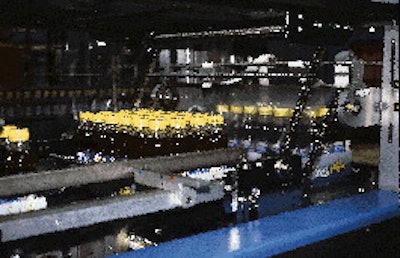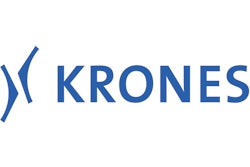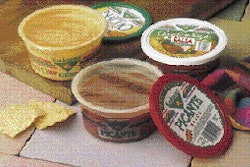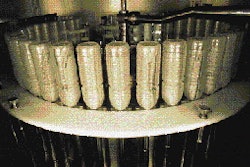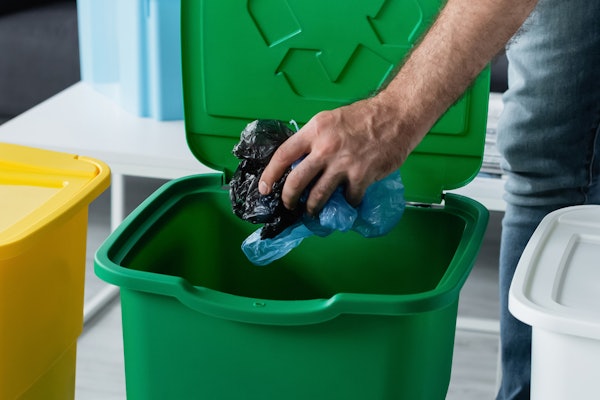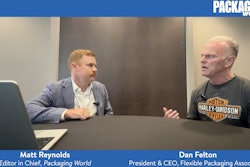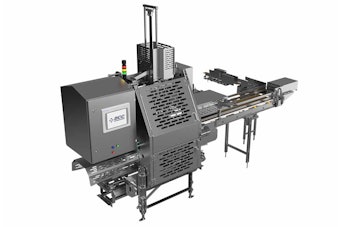As a distributor for Lipton iced tea from 1993 to 1998, the Swiss bottled water giant Henniez S.A. helped Switzerland achieve the highest per capita iced tea consumption rate in the entire world.
Along the way, Henniez, named for the small village in which it is headquartered, realized that if iced tea was so popular in Switzerland, it should be more profitable to bottle it, rather than simply distributing it. Henniez planned to convince Lipton to extend its contract to bottling the tea, along with distributing it.
The company also decided that its iced tea should not be subjected to pasteurization because it felt the prolonged exposure to heat would damage taste. The Lipton product distributed by Henniez had been cold-filled into a returnable bottle of polyethylene terephthalate and pasteurized to make it shelf stable.
Hot-filled PET was never an option, either, says director of technology and production Pascal Rouge. "Margins on tea are small, so you have to be very competitive," he says. "Hot-fill PET bottles, which must be relatively heavy to withstand the heat, are just too expensive."
Ambient filling of PET on an aseptic filler, on the other hand, permits a bottle to be as light as a carbonated soft-drink bottle. It also minimizes the length of time during which product is exposed to heat, which means flavor can be maintained at its peak. So Rouge and colleagues decided early on that aseptic packaging was the way to go.
But which aseptic system? Minimal space was available, which didn't bode well because many of the aseptic PET filling systems available then and now require considerable square footage. They also involve, says Rouge, a level of complexity that Henniez wanted to avoid. The complexity Rouge refers to is the "clean room" quality that is a prerequisite to some of today's commercially available aseptic filling systems. Class 100 or 1ꯠ sterility, large areas that must be overpressured, employees who must wear clean gowns and sanitize themselves each time they enter the filling area--these were all the options that Henniez management hoped to avoid, says Rouge.
'Not that easy'
"It's not that easy to say, okay, let's build an aseptic room and put a filler in it," says Rouge. "We weren't used to working that way, not only at the management level but also the people who work with the machines. In addition, the investment would have been much higher for an aseptic-room approach."
So Henniez formed a relationship with Tetra Pak Plastic Ltd. (Geneva, Switzerland), just then developing a linear aseptic bottle filler whose most distinguishing feature is its small footprint. Measuring 8x3 m (26'x10'), the machine is capable of running 11/2-L bottles at 83/min. Fed by a tubular heat exchanger for the thermal processing of the tea and an in-line blow molder, the integrated line provides blowing, sterilizing, filling, capping, labeling, multipacking and palletizing.
Included in the line is one of Tetra Pak's first X-6 stretch blow-molding machines. The Tetra Plast(TM) LFA-8 filler is also among the first of its kind. It has a built-in sterile chamber that eliminates the need to locate the line in a costly and complicated clean-room environment. So the filler sits on the plant floor like any other piece of equipment.
Sterility is no less important than in any other aseptic filling operation. But, says Rouge, the Tetra Pak system delivers it in a clever way that requires no clean rooms or pharmaceutical-style garb. It lets a beverage plant be a beverage plant, he says.
By 1997, Henniez committed itself to Tetra Pak's aseptic filling concept and contracted with Tetra for a system ready for commercial production in early '99. But a funny thing happened on the way to commercialization. Also in 1997, Henniez's contract with Lipton was terminated. Fortunately, another Henniez contract, for Virgin Cola in PET bottles, was signed in April '98. This relationship with England-based Virgin paved the way for Henniez to seek Virgin's permission for Henniez to market iced tea under the high-flying Virgin brand. In return Henniez pays a royalty to Virgin. Thus, Virgin Iced Tea in 1/2- and 11/2-L aseptically filled PET bottles was launched last January.
The Virgin connection was important because it gave Henniez a brand that was already a well- known entity. Advertising and promoting such a brand can be done effectively at far less cost than it would take to create and promote an entirely new brand.
Blending is first
The first steps in the Henniez operation are product blending and then sterilization in the tubular heat exchanger. There's also bottle blow-molding, done on the X-6 machine. PET preforms, also supplied by Tetra Pak from its plant in Belgium, are dumped into a large floor-level hopper and then elevated along a track that eventually drops down into the infeed of the blow-molding machine. Preforms are placed upside down six-across on transport mandrels that move slowly past heating lamps. When the preforms exit the heating section, they're conveyed at a right angle in groups of six and enclosed in the six blow molds for blowing under 37 bar of pressure.
When the molds open, the six bottles are advanced to a mechanical pick-off device that grips bottles by the necks and deposits them right-side-up on a discharge conveyor. This conveyor moves off at a right angle in the direction of the filler.
At the entrance of the filler, line pressure and stainless-steel lane guides divide the bottles into eight lanes. A transfer mechanism picks eight bottles by the sidewalls from the infeed conveyor and transfers them, upside down, to a shuttle unit that grips each of the eight bottles by its neck ring. This shuttle strokes forward and hands the bottles off to another eight-up tool that uprights the bottles and hands them off to the tool that takes them through warming, sterilizing, filling and capping. All four of these activities occur inside the machine's inner chamber. To enter this chamber, bottles pass through an "airlock," where overpressurized sterile air is blown downward to keep ambient air out of the sterile chamber.
Prior to filling, the intermittent-motion machine stops the bottles at three stations. In the first, hot air is blown into the bottles to bring internal temperatures to about 100°C (212°F). This accomplishes two objectives: Warming the bottles prevents condensation from forming on the inside, and the 25% hydrogen peroxide sterilizing solution works optimally under these conditions.
In the second station within the filler's sterile chamber, a mist of hydrogen peroxide is blown in to sterilize the bottles. And in the third station, hot air is blown in to evaporate the hydrogen peroxide.
The sterile bottles move next beneath eight magnetic flow-meter nozzles. These nozzles do not touch the bottles. Filled bottles move next to a station where a roll-fed foil lamination is heat-sealed to each bottle finish and die-cut. The foil lamination is pre-sterilized with hydrogen peroxide in much the same manner as the bottles.
This complex foil structure was developed with considerable help from Sonoco (Hartsville, SC), and Tetra Pak considers it proprietary. Henniez is the first bottler to use the material.
According to Tetra Pak's Pierre Huser, technical project manager, the material has to incorporate a number of important properties, including resistance to both heat and hydrogen peroxide. Also, the heat-seal layer that contacts the bottle finish must be compatible with PET. And, while seal integrity is critical so that leaks can be prevented, the consumer wants the foil membrane to peel off easily and completely without having bits of the liner stuck to the bottle finish.
Without describing the seven-layer foil lamination in complete detail, Huser does say that the heat-seal layer is a thin layer of polyester. Foil is somewhere in the middle. Also included is what Huser describes as a "PET foam" that helps the thin heat-seal layer conform to any minute irregularities in the neck finish.
Once the liner is sealed onto the bottle finish, the bottles can be released from the sterile chamber. This is done by a pick-off mechanism that grips bottles and places them onto a discharge conveyor belt. As they depart the sterile chamber, bottles pass through an air-lock station much like at the infeed.
The compact 26'x10' footprint of the aseptic filler, from infeed to discharge, played a big role in winning over the Henniez decision makers, says Rouge. Currently, one shift can handle Henniez's volume. Should that change, as Rouge expects it to, Henniez will add shifts to take care of the added volume.
When the plant needs to change bottle sizes, changeover of the filler takes less than two hours, says Rouge. The firm typically runs each size for about a week before making a change.
Lined TE closure
A rotary capper from Zalkin, represented in the U.S. by Fowler Products (Athens, GA), sits a few feet from the discharge of the filling machine. The 38-mm injection-molded polypropylene closures with tamper-evident drop-down band are supplied by French manufacturer Bericap, represented in the U.S. by Bericap North America (Burlington, Ontario, Canada). Inside the cap is a liner of ethylene vinyl acetate that provides a leak-resistant seal for when the consumer recloses the bottle after removing the inner seal.
Labels are applied on a Krones (Franklin, WI) Canmatic hot glue labeler. Henniez converts its own paper labels on-site, printing them offset in four colors. Next, an inspection unit from elettroimpianti (Rubbiano, Italy) relies on radio frequency to check fill-level accuracy and photocells to check label and cap presence. It rejects any bottle with improper fill level or missing cap or label.
Bottles pass an ink-jet coder from Wilux Print (Bubikon, Switzerland) that prints production time and date as well as sell-by date. At the outset, a conservative six-month sell-by date was imprinted on the sidewall of each cap. "But we knew we would be able to extend it, which we now are doing," says Rouge. "We'll soon move to nine months, and we may go even longer at some future date."
Individual bottles are grouped and shrink-bundled in a machine made by the Itain manufacturer SMI, represented in North America by Francis W. Harkness (Vaudreuil-Dorion, Quebec, Canada). The 11/2-L bottles are in unsupported film, six bottles per bundle. The smaller bottles, however, are bundled in either six- or 24-count configurations. The 24-count pack includes a corrugated tray that's automatically formed from a blank by the SMI machine. The tray is printed flexo in three colors by Model Emballages (Moudon, Switzerland). The six-count bundles use unsupported film. Separately, they are loaded manually into a corrugated tray and sent through an off-line shrink-film wrapper and tunnel.
For six-packs of 11/2-L bottles, a Twin Pack (Maiano, Italy) machine applies handles by heat-sealing them to the shrink-wrapped bundles. The last piece of equipment in the line is a palletizer/stretch wrapper from Berchi (Parma, Italy). Layers of shrink-wrapped bundles are collated and then lifted onto a pallet. When the proper number of layers are on the pallet, a powered roller conveyor moves the pallet into the Berchi stretch wrapper. Then the wrapped pallet moves on powered roller conveyors to a lift mechanism that takes pallets to the warehouse.
Now that the first two bottle sizes have been mastered by Henniez, a 33-mL bottle is in the works. Henniez is also intrigued by Tetra Pak's current development work on barrier bottles. If the X-6 stretch blow-molding machine can be modified to blow mold preforms that incorporate a barrier layer, says Rouge, Henniez would look seriously at bottling fruit-based beverages in addition to teas.
With or without this expanded capability, says Rouge, Henniez is excited about its new aseptic PET capability. He readily admits there were hurdles at the outset, but nothing out of the ordinary. And, as he puts it, "If we had to choose a system tomorrow, we'd choose the same one."
